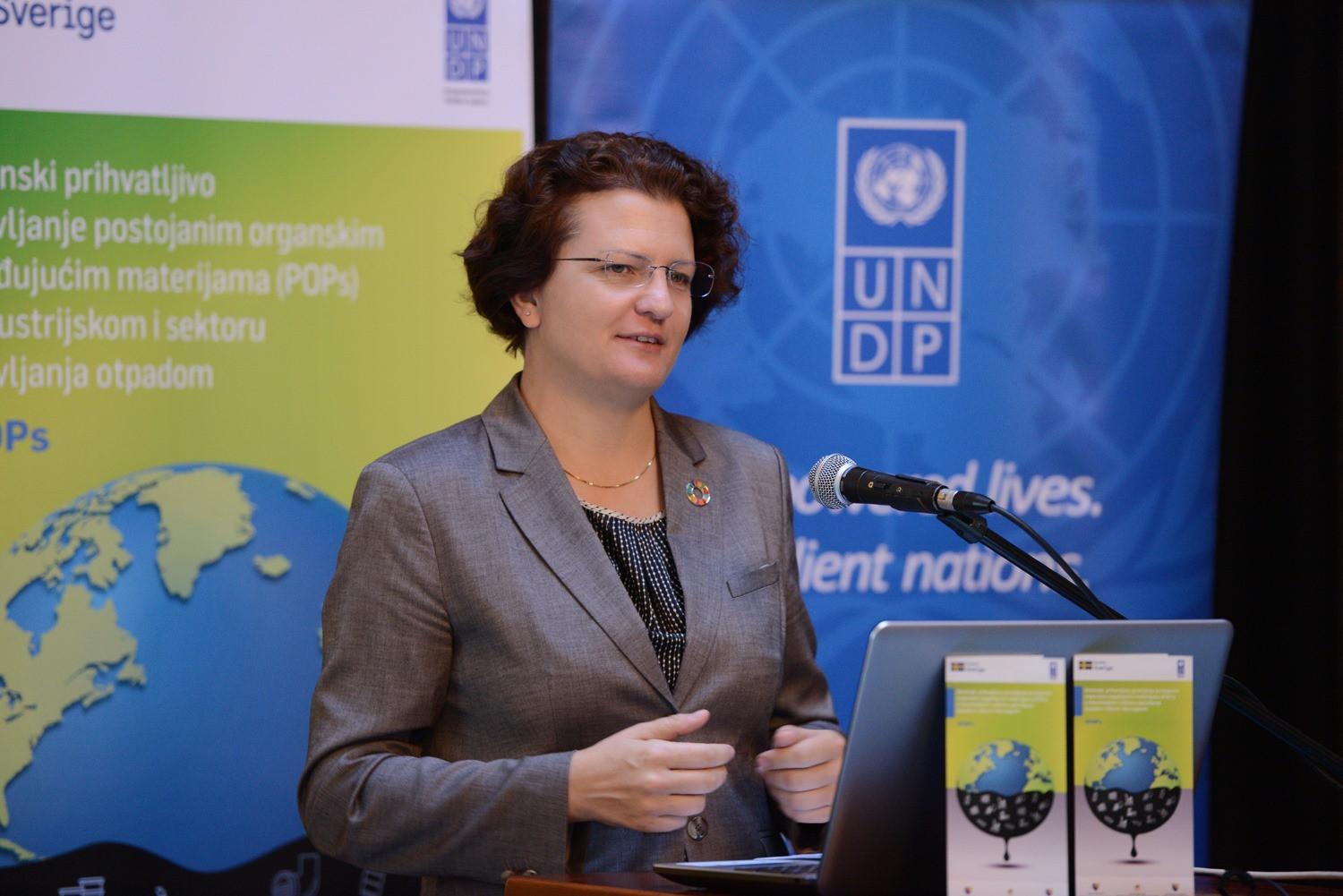We face daunting global challenges. But here are eight reasons to be hopeful | John D Boswell – The Guardian

Report on Global Progress and Future Prospects in Alignment with Sustainable Development Goals
This report assesses current global trends and future potential through the framework of the United Nations Sustainable Development Goals (SDGs). It counters prevailing pessimism by highlighting significant, often underreported, progress in key areas. While acknowledging formidable global challenges, the analysis focuses on positive long-term trendlines that provide a strong basis for optimism regarding humanity’s capacity to achieve the 2030 Agenda and beyond.
-
Climate Action and Energy Transition
SDG 13: Climate Action & SDG 7: Affordable and Clean Energy
Global efforts to combat climate change and transition to sustainable energy sources are demonstrating significant momentum, directly contributing to the targets of SDG 13 and SDG 7.
- Decarbonization Progress: Global carbon dioxide emissions have slowed considerably. Many nations are achieving decoupling, where per capita emissions fall while GDP and energy consumption rise. This progress indicates that a pathway to keeping global warming below 2°C is increasingly feasible.
- Renewable Energy Revolution: The growth of solar energy has surpassed expert predictions, with costs now below those of coal. This economic tipping point is crucial for achieving SDG 7, as it incentivizes a market-driven shift to clean energy.
- Investment Shift: Global investment in clean energy technologies now significantly exceeds that in fossil fuels, signaling a structural transformation of the energy sector.
- Interlinked SDG Benefits: The advent of abundant, cheap renewable energy creates opportunities to advance other SDGs, such as providing affordable desalination to address water scarcity (SDG 6: Clean Water and Sanitation) and fueling a new, sustainable industrial revolution (SDG 9).
-
Socio-Economic Advancement
SDG 1: No Poverty & SDG 8: Decent Work and Economic Growth
The global community has made unprecedented strides in poverty eradication, a core objective of the SDGs.
- Poverty Reduction: Since 1990, over one billion people have been lifted out of extreme poverty. The global share of the population in extreme poverty has fallen from 38% to 9.1%. This represents one of the most significant achievements in human history and direct progress on SDG 1.
- Future Trajectory: While over 600 million people remain in extreme poverty, the established downward trend is expected to continue, driven by new economic opportunities arising from the energy transition and technological innovation, supporting SDG 8.
-
Global Health and Well-being
SDG 3: Good Health and Well-being
Dramatic improvements in public health, medicine, and living standards have fundamentally reshaped human longevity and well-being, aligning with the ambitions of SDG 3.
- Increased Longevity: Average global life expectancy has more than doubled since 1900, a testament to widespread progress in health and sanitation.
- Reduced Child Mortality: A stunning fall in child mortality, from approximately 50% for most of history to under 5% globally today, is a key indicator of success under SDG 3. The goal of reducing this further is a morally urgent and feasible objective.
- Accelerating Medical Innovation: Converging advancements in AI (e.g., Google’s AlphaFold for drug discovery) and biotechnology (e.g., CRISPR for genetic diseases) are set to revolutionize healthcare, promising cures for thousands of diseases and enhancing human health on an exponential scale.
-
Innovation, Infrastructure, and Sustainable Industry
SDG 9: Industry, Innovation, and Infrastructure & SDG 8: Decent Work and Economic Growth
A new era of innovation in robotics and space exploration is poised to create resilient infrastructure, promote inclusive and sustainable industrialization, and foster economic growth.
- Robotics and Automation: The development of intelligent humanoid robots capable of learning by observation promises to address labor shortages, eliminate dangerous jobs, and boost productivity. This contributes to SDG 8 by improving working conditions and to SDG 9 by advancing technological capabilities in manufacturing and services.
- The New Space Age: Drastically reduced launch costs have democratized access to space, fostering innovation. Satellite broadband is expanding internet access to remote regions, supporting SDG 4 (Quality Education) and SDG 9. Future prospects like asteroid mining could provide resources sustainably, while space-based research accelerates breakthroughs in medicine (SDG 3).
Conclusion: Optimism as a Catalyst for the 2030 Agenda
Human Resilience and the Path Forward
The evidence indicates that humanity is not only resilient but also possesses the ingenuity to address its greatest challenges. The progress outlined in this report across climate, poverty, health, and technology demonstrates a powerful, positive trajectory that aligns directly with the Sustainable Development Goals.
An optimistic outlook, grounded in these trends, is not a passive stance but a moral and strategic imperative. It is the driving force behind the innovation, collaboration, and perseverance required to solve complex problems. By focusing on these bright trendlines, the global community can harness its collective capacity to build upon these successes and accelerate progress toward a sustainable, prosperous, and equitable future for all, thereby realizing the promise of the SDGs.
Analysis of the Article in Relation to Sustainable Development Goals (SDGs)
1. Which SDGs are addressed or connected to the issues highlighted in the article?
The article discusses several global challenges and areas of progress that directly connect to the following Sustainable Development Goals:
-
SDG 1: No Poverty
The article explicitly addresses the global effort to eradicate poverty, highlighting significant progress. It mentions that “more than a billion people have been lifted out of extreme poverty” since 1990.
-
SDG 3: Good Health and Well-being
This goal is central to the article’s sections on increased longevity and medical breakthroughs. It discusses the dramatic increase in life expectancy, the fall in child mortality, and the potential of new technologies like AI and Crispr to “eliminate all disease.”
-
SDG 6: Clean Water and Sanitation
The article touches upon this goal by linking energy abundance to new possibilities for “affordable desalination, which could address water shortages in many parts of the world.”
-
SDG 7: Affordable and Clean Energy
A major theme is the transition to renewable energy. The article celebrates the “exponential growth in solar energy” and how its falling costs are making clean energy more accessible, which will allow underdeveloped countries to improve living standards without increasing carbon emissions.
-
SDG 8: Decent Work and Economic Growth
The article discusses how advancements in robotics and AI can boost economic growth and productivity. It suggests that humanoid robots could “replace labor-intensive and dangerous jobs,” freeing people to “pursue more desirable jobs, elevating quality of life and boosting economic growth.”
-
SDG 9: Industry, Innovation, and Infrastructure
This goal is reflected in the discussions on technological advancements across various sectors, including robotics, AI, biotechnology, and space exploration. The article notes how innovations like “reusable rockets” and “satellite broadband” are creating new industries and improving global connectivity.
-
SDG 13: Climate Action
The first point of optimism in the article is dedicated to climate change. It notes that “global carbon dioxide emissions have significantly slowed” and that nations are making “ambitious net-zero commitments that, if realized, could feasibly keep warming below 2C.”
2. What specific targets under those SDGs can be identified based on the article’s content?
Based on the article’s content, the following specific SDG targets can be identified:
-
Target 1.1: By 2030, eradicate extreme poverty for all people everywhere, currently measured as people living on less than $1.25 a day.
The article directly addresses this by citing the statistic that “137,000 people escaped from extreme poverty yesterday” and noting the drop in the global population’s impoverished share from 38% to 9.1%.
-
Target 3.2: By 2030, end preventable deaths of newborns and children under 5 years of age.
The article highlights a “stunning fall in child mortality,” stating that while historically about half of all children died before age 15, “today the figure is less than 5% globally.”
-
Target 3.4: By 2030, reduce by one third premature mortality from non-communicable diseases through prevention and treatment and promote mental health and well-being.
The discussion on increasing life expectancy (“an average person born today can expect to live more than twice as long as someone born around 1900”) and accelerating medical breakthroughs for diseases points to this target.
-
Target 6.1: By 2030, achieve universal and equitable access to safe and affordable drinking water for all.
This is implied through the mention of “affordable desalination, which could address water shortages,” made possible by cheap renewable energy.
-
Target 7.2: By 2030, increase substantially the share of renewable energy in the global energy mix.
The article’s focus on the “exponential growth in solar energy” and the fact that “global investment in clean energy now far outstrips that of fossil fuels” directly supports this target.
-
Target 8.2: Achieve higher levels of economic productivity through diversification, technological upgrading and innovation.
The section on robotics and AI creating new economic possibilities and “boosting economic growth” aligns with this target.
-
Target 9.5: Enhance scientific research, upgrade the technological capabilities of industrial sectors in all countries.
The article is replete with examples of this, from “converging advancements in AI and biotechnology” and “new gene-editing tools like Crispr” to innovations in robotics and space technology.
-
Target 9.c: Significantly increase access to information and communications technology and strive to provide universal and affordable access to the Internet in least developed countries by 2020.
The article mentions that “Satellite broadband is starting to bring internet access to rural and underdeveloped parts of the world,” which directly relates to this target.
-
Target 13.2: Integrate climate change measures into national policies, strategies and planning.
The article’s mention of “ambitious net-zero commitments” by nations and the goal to “feasibly keep warming below 2C” reflects the integration of climate action into national planning.
3. Are there any indicators mentioned or implied in the article that can be used to measure progress towards the identified targets?
Yes, the article mentions several quantitative and qualitative indicators that can measure progress:
- Indicator 1.1.1 (Proportion of population below the international poverty line): The article provides specific data points, stating that the share of the global population in extreme poverty has fallen “from 38%… down to 9.1% today” and that over “600 million people” still live below the “$2.15 a day” line.
- Indicator 3.2.1 (Under-5 mortality rate): Progress is shown by the statistic that child mortality before the age of 15 is now “less than 5% globally and as low as 0.4% in some wealthy nations.”
- Indicator related to Life Expectancy (part of SDG 3): The article provides a clear metric of progress by stating that life expectancy in South Korea has surged “from just 23.5 years in 1908 to more than 83 years today.”
- Indicator 7.2.1 (Renewable energy share in the total final energy consumption): Progress is implied through several metrics: the “exponential growth in solar energy,” the fact that 2023 solar capacity was 10 times what was predicted in 2015, and that “global investment in clean energy now far outstrips that of fossil fuels.”
- Indicator 9.c.1 (Proportion of population covered by a mobile network, by technology): The article implies progress by mentioning that “Satellite broadband is starting to bring internet access to rural and underdeveloped parts of the world.”
- Indicator 13.2.2 (Total greenhouse gas emissions per year): The article indicates progress by stating that “global carbon dioxide emissions have significantly slowed, and in many countries, per capita emissions are falling.”
- Climate Change Mitigation Goal: The article explicitly mentions the international goal to “keep warming below 2C,” which serves as a primary indicator for global climate action success.
4. Summary Table of SDGs, Targets, and Indicators
| SDGs | Targets | Indicators Identified in the Article |
|---|---|---|
| SDG 1: No Poverty | 1.1: Eradicate extreme poverty. | Proportion of global population in extreme poverty fell from 38% to 9.1%; living below the $2.15 a day line. |
| SDG 3: Good Health and Well-being | 3.2: End preventable deaths of newborns and children. | Child mortality rate is less than 5% globally. |
| SDG 3: Good Health and Well-being | 3.4: Reduce premature mortality from non-communicable diseases. | Increase in life expectancy (e.g., from 23.5 to 83 years in South Korea). |
| SDG 6: Clean Water and Sanitation | 6.1: Achieve universal access to safe and affordable drinking water. | Potential for affordable desalination to address water shortages. |
| SDG 7: Affordable and Clean Energy | 7.2: Increase the share of renewable energy. | Exponential growth in solar energy; investment in clean energy outstrips fossil fuels; solar costs are below coal. |
| SDG 8: Decent Work and Economic Growth | 8.2: Achieve higher levels of economic productivity through innovation. | Robots replacing labor-intensive jobs to boost economic growth. |
| SDG 9: Industry, Innovation, and Infrastructure | 9.5: Enhance scientific research and upgrade technology. | Advancements in AI, biotechnology (Crispr), robotics, and reusable rocket technology. |
| SDG 9: Industry, Innovation, and Infrastructure | 9.c: Increase access to information and communications technology. | Satellite broadband bringing internet access to rural and underdeveloped areas. |
| SDG 13: Climate Action | 13.2: Integrate climate change measures into national policies. | Slowing of global CO2 emissions; national net-zero commitments; goal to keep warming below 2C. |
Source: theguardian.com

What is Your Reaction?
 Like
0
Like
0
 Dislike
0
Dislike
0
 Love
0
Love
0
 Funny
0
Funny
0
 Angry
0
Angry
0
 Sad
0
Sad
0
 Wow
0
Wow
0














































































